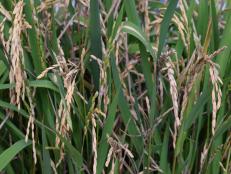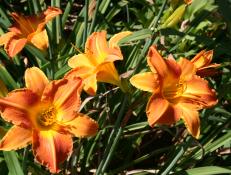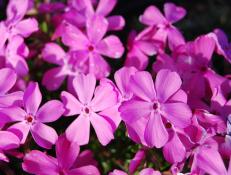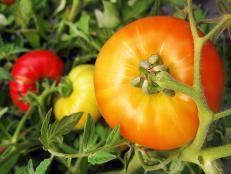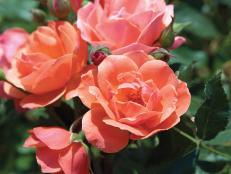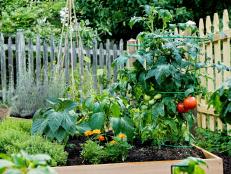How to Grow Corn
Set your summer table with fresh sweet corn this year. Here's how to grow it in your own garden.
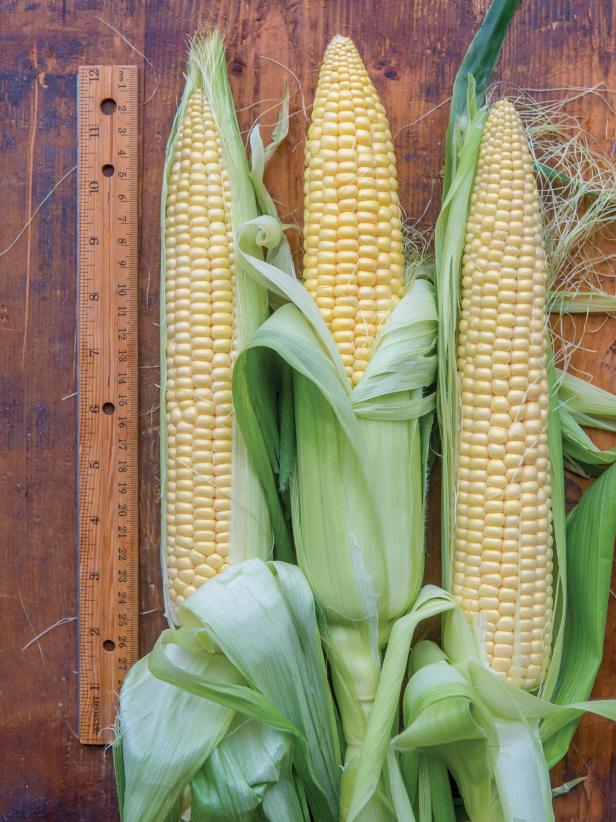
W. Atlee Burpee & Co.
Sweet corn is one of the world's favorite vegetables — and growing corn is especially popular with home gardeners. Grow a successful corn crop with these step-by-step instructions
Materials + Tools
- sod staples
- 3" peat pots
- corn seed
- fertilizer
- ID markers
- hoe
- rake
- scarecrow
- grow lights
- tiller
- garden hose
- garden fork
Corn does not have a very deep root system, so be sure to plant in a spot that's in full sun yet sheltered from the wind. A good blast of wind can flatten a corn plant.
Prior to sowing the seed, it's best to amend the soil. Begin by using a garden tiller to break up the planting area. If the soil is hard, make several passes over it until it's sufficiently loosened. Next, add the first round of composted topsoil and manure, then spread it with a rake until it's evenly distributed.
Add Fertilizer
Corn requires lots of nitrogen, so this need should be addressed with fertilizer prior to planting. First, check the soil temperature, then add nitrogen-rich fertilizer for ideal corn-growing conditions. Select a mixed fertilizer with a 10-10-10 formula — that is, 10 percent nitrogen, 10 percent phosphorus and 10% potassium. Add at a rate of 4 cups per 100 feet of planting row. Use a light garden tiller (or a garden fork) to work the fertilizer into the soil about 3 to 4 inches deep.
Soak the Seeds First
Sow sweet corn seed in full sun when the soil warms to between 60 and 95 degrees. Sweet corn does not germinate well in cold soil and in low temperatures will die. Sweet corn seeds can appear shrunken and shriveled; before they can germinate, they must slowly plump up with water. To help them along, soak dry seeds in water at room temperature overnight before planting.
More Planting Tips: In the warmer climates, direct-sow seeds in mid-May. The cobs should be ready for picking in late August or September. In cooler climates, sow the seeds under glass in mid-April to early May, then plant in late May to early June.
Any seedling transplants should be started in peat pots three weeks before you are ready to set them out. To start seedlings indoors, sow two seeds — each about an inch deep — in 3-inch peat pots. To help them germinate, keep the room temperature at a gentle heat of 55 to 59 degrees. Once they've germinated, use a cool-white fluorescent grow light to aid their growth. Place the light about 2 inches above the plants. Leave the light on 12 to 14 hours a day, and be sure to raise it as the plants grow.
Before transferring seedlings outdoors, harden them off by gradually acclimating them to outside conditions. To do this, place the seedlings outside during the day when temperatures are above 40 degrees; do not set the plants in direct sun or high wind. Set them wherever there's shade. Move them out a bit more each day for greater exposure to the sun. Each night, bring the plants indoors. Provided they are at least 2 inches tall, after three to five days of hardening off, they'll be ready to transplant outside.
Mark Rows
Mark off the rows by staking the bed to create rows. First, place stakes the length of the bed and then stretch string along the ground to mark the planting line. Be sure to leave 20 to 36 inches between the rows for cultivation and plant at least four rows for the best pollination. Many short rows will provide better pollination than a few long ones.
Form a Furrow in Soil
Use the edge of a hoe to draw a shallow furrow, 1 to 2 inches deep, along one side of the string. Then remove the stakes and string and place ID markers at the end of the furrows. Drop the corn seeds into the planting furrows, spacing the seed drops 4 to 5 inches apart. Plant two or three seeds to ensure good germination. Cover the corn seed by raking 1-1/2 inches of soil over them using the soil from the edges of the furrow.
Water and Protect
Once the seeds are planted, water the block rows well. Good soil moisture is especially critical for the germination of extra sweet corn as it must absorb more water than any other types for germination to occur. This crop will require at least an inch of water from rainfall or irrigation per week for normal growth.
As the plants grow, special care needs to be given to the seedling.
- Mound the soil around the stems to support them against wind in exposed areas.
- When plants are about 6 inches tall, thin the seedlings. Crowded corn will bear fewer, smaller and poorly filled ears.
- Using scissors, thin the plants to 8 to 10 inches apart if all seeds in a spot germinate and grow. Be sure to thin out the poorer seedlings, saving the best plant from each spot. This is also a good time to side dress the plants with 10-10-10 fertilizer, which will help encourage the young seedlings to grow.
- After you finish side dressing, lightly water in the fertilizer.
Tip: As plants grow and weather becomes warmer, increase watering. When roots appear at the base of the stem, cover them with soil or mulch with old compost.
How to Make a Scarecrow to Frighten Unwanted Critters From Your Garden
Build a simple scarecrow of your own design using wooden garden stakes, some old clothes and shoes, a hammer and a little imagination.
Harvest the Corn
Sweet corn should be ready for harvest about 80 to 95 days after planting, depending on the variety. Each cornstalk should produce at least one large ear. Under good growing conditions many varieties will produce a smaller second ear.
Your first ears of corn are ready to pick 20 to 24 days after the silks have grown about 1 to 2 inches longer than the tip of the ear. Harvest sweet corn when the ears are full and blunt at the tip. The husks should be tightly folded and green. When the tassels die and the cob stands out from the stem at about 30 degrees, it's harvest time.
To test your ears, use your thumb nail to poke an end kernel. It should squirt forth milky white sap. If the liquid is clear and watery, the corn still needs a few more days on the stalk.
Picking and Preparing the Corn
To harvest an ear, grasp it firmly, bend it down and pull toward the ground with a twisting motion. Try to break the ear shank without breaking the main stalk or tearing the entire shank from the stalk.
To maintain the sweetness and freshness of the corn, cobs should be immersed in ice cold water as soon as possible after picking and left in the water until eaten. The ears should be eaten, processed or refrigerated as soon as possible.
How to Freeze Corn
Treat your family to the fresh-picked flavor of corn on the cob—all year long. It’s not hard to freeze this summertime favorite.
The best time to pick corn is just before eating. But if you have to store it, get it into the refrigerator, unhusked and wrapped in damp towels, as soon as possible. Try to use the corn within 1 to 2 days and do not husk until just prior to cooking.
The best way to shuck corn is to pull the husks down the ear and snap off the stem at the base. Under cold running water, rub the ear in a circular motion to remove the silk or use a stiff vegetable brush. Discarded husks can be shredded, then composted and placed back into garden soil.
Freezing is the best method for preserving the quality of sweet corn. It can be stored in cool conditions for about 5 days, but remember: The best corn is simply the freshest corn.
Corn Recipes from Food Network
Get Food Network's 35 best corn recipes and make the most of your summer bounty.

.-Battle-on-the-Beach-courtesy-of-HGTV.-.jpg.rend.hgtvcom.196.196.suffix/1714761529029.jpeg)









